Chronobiology Isolation Laboratory
The Chronobiology Isolation Laboratory (CIL) is a newly constructed state-of-the-art facility, located in the Hospital of the University of Pennsylvania, with the capability to change and monitor the environment for subjects in sleep restriction and isolation studies. Features include:
Color-changing lighting: A computer-controlled LED system with digital presets, custom designed by Philips Lighting, can deliver any proportion of the full visible color spectrum. Scene capabilities include simulating the day from sunrise to sunset on the Martian surface.
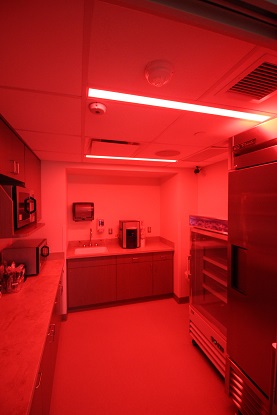 |
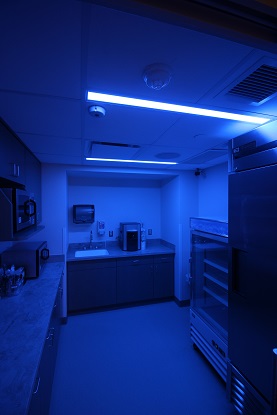 |
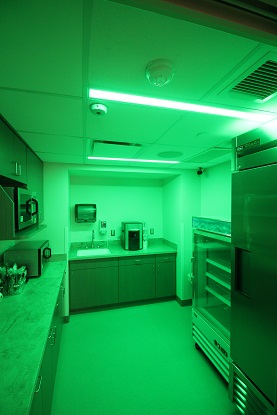 |
Audio/video monitoring and recording: The CIL has a total of 34 HD video cameras, including 10 cameras with remote direction and pan-tilt-zoom (PTZ) control, that record all areas of the lab (except bathrooms). Video and audio can be recorded full time (24/7) in color, or in black and white with infrared technology in areas of total darkness. The camera system can store 7 or more days of video. Cameras are integrated into the CIL’s physiological recording system, so video and audio can be synchronized with tasks and performance tests.
Acoustically controlled rooms: The bedrooms and configurable testing space are individually sound- and vibration-isolated. Ceiling-mounted and movable speakers in each room can accurately simulate background and event noise. The audio system includes a multi-channel computer-controlled playback system.
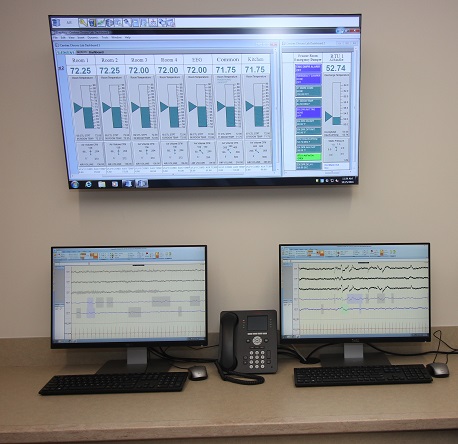 Physiological monitoring systems: Full ambulatory polysomnography (PSG) system with video integration. High resolution Faros ECG and activity monitors for unobtrusively monitoring ECG and heart rate variability (HRV). Pupillometric eye gaze monitoring synchronized to PVT performance tests. Full metabolic measurement carts. Blood pressure and SpO2 monitoring.
Physiological monitoring systems: Full ambulatory polysomnography (PSG) system with video integration. High resolution Faros ECG and activity monitors for unobtrusively monitoring ECG and heart rate variability (HRV). Pupillometric eye gaze monitoring synchronized to PVT performance tests. Full metabolic measurement carts. Blood pressure and SpO2 monitoring.
Proximity system: For studies of group interaction, a system of actigraphy devices (Actiwatch-Link and wGT3X-BT monitors) can determine subject location and inter-subject proximity by logging the received signal strength indicator value (RSSI) of other devices within range at a minimum rate of 1 sample per minute. This data, in combination with CIL video collection, can be analyzed to evaluate group interaction.
Computer-controlled HVAC: A system with data logging capabilities has a fully manipulable temperature range from 60°F to 90°F.
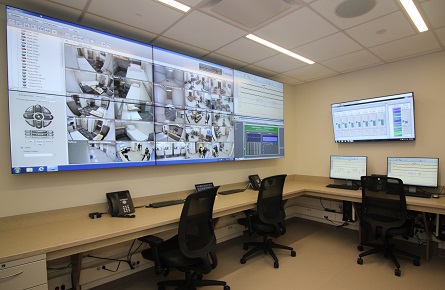 State-of-the-art mission control center: All CIL systems are integrated and operable from a mission control console with a large video wall and additional audio and video inputs, as well as 4 physiological monitoring workstations. Communication between mission control and participants in isolation studies is possible via an intercom system and wireless headsets.
State-of-the-art mission control center: All CIL systems are integrated and operable from a mission control console with a large video wall and additional audio and video inputs, as well as 4 physiological monitoring workstations. Communication between mission control and participants in isolation studies is possible via an intercom system and wireless headsets.
Medical resources: Since the CIL is located within the Hospital of the University of Pennsylvania, it has access to nurses, physicians, a metabolic kitchen, and new MRI facilities.
Fully configurable habitat: The subject habitat area (1410 sq ft; 131 m2) includes:
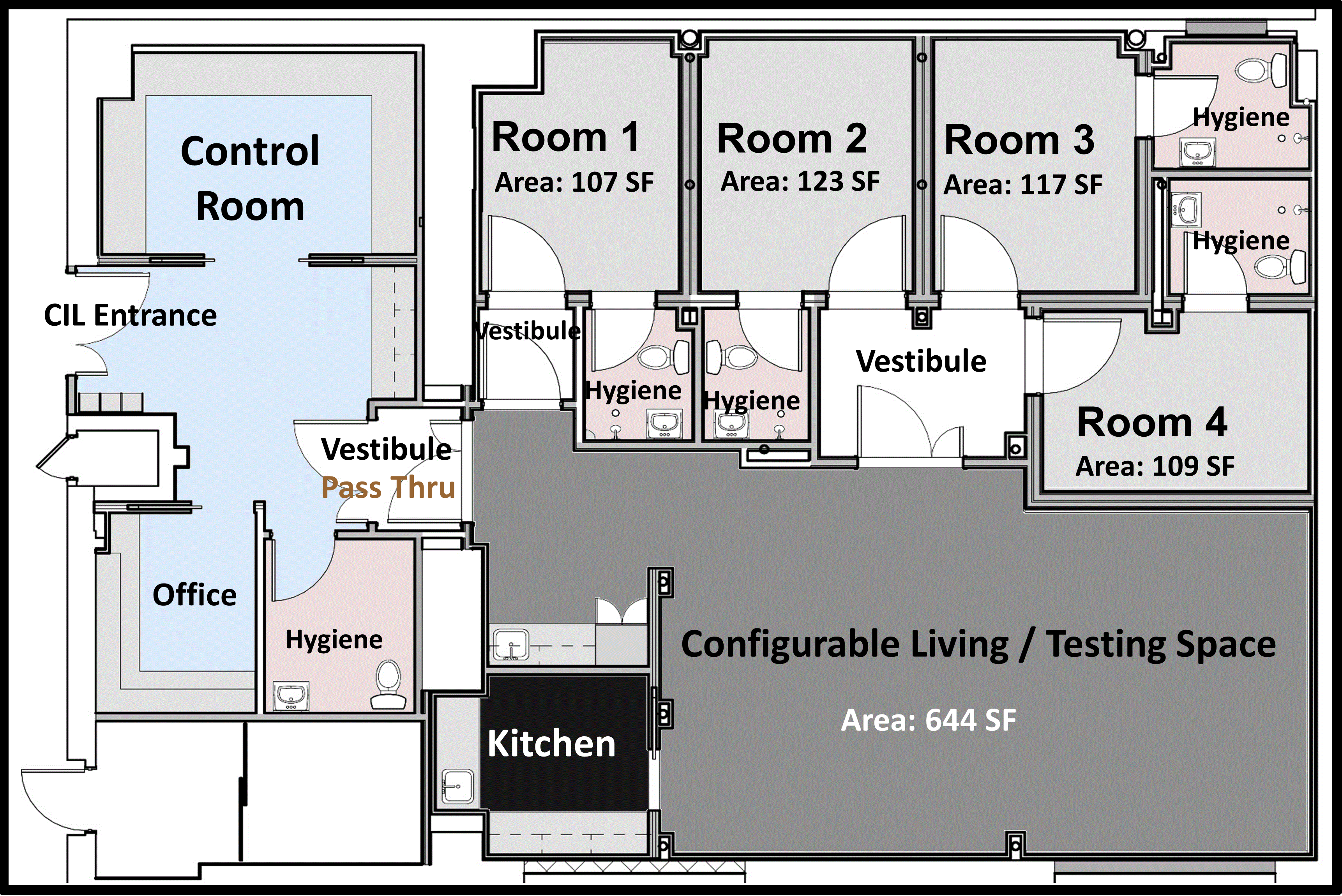
- 4 subject bedrooms, each with its own full bathroom. Each bedroom has a Hill Rom hospital bed, capable of 16 degree head-down tilt, and a personal laptop that can be used for performance tests and audio/video journals.
- Kitchen with microwave, refrigerator and freezer
- A large common area that can be configured with movable walls and contains various testing equipment, including a virtual reality exercise bike, a driving simulator, a lunar lander simulator, the “6DF” docking simulator, and the “ROBoT” robotic arm onboard training task.
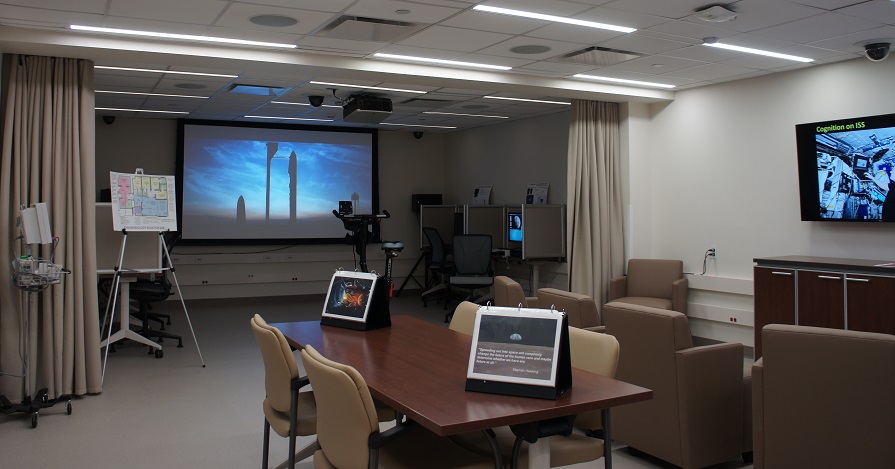 |
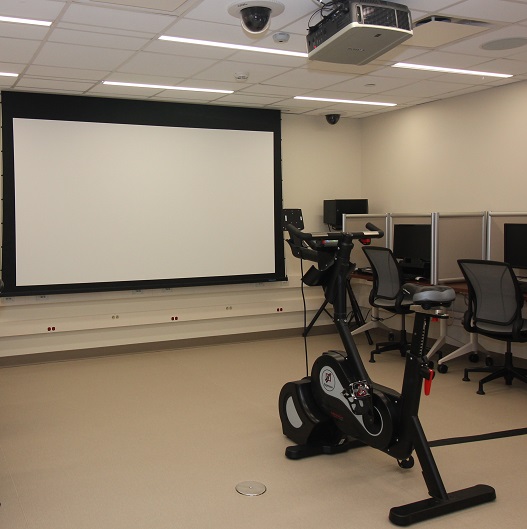 |
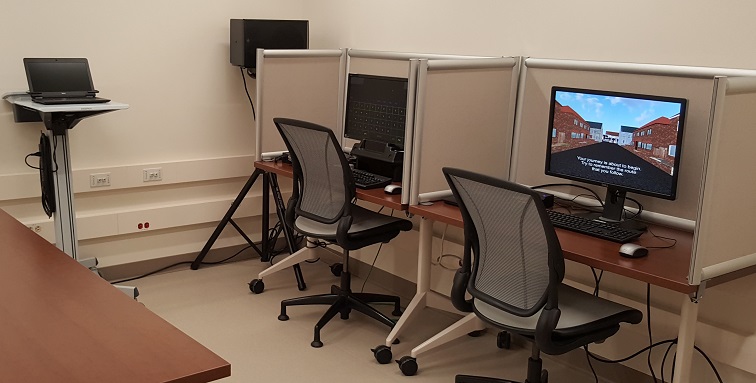 |
 |
Back to Top
